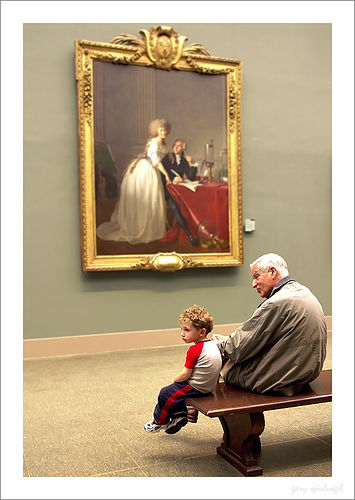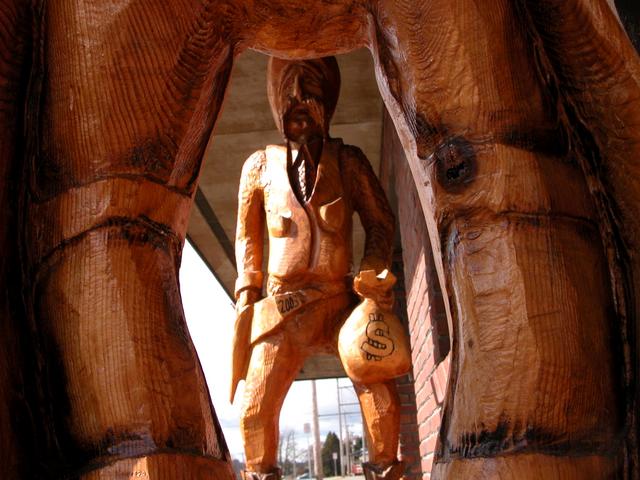
In the image to the right by Mark Peterson, one wooden cowboy is framed by the bowed legs of another.
Framing can give the viewer the impression of looking through something to the subject. The frame directs the eye's gaze.
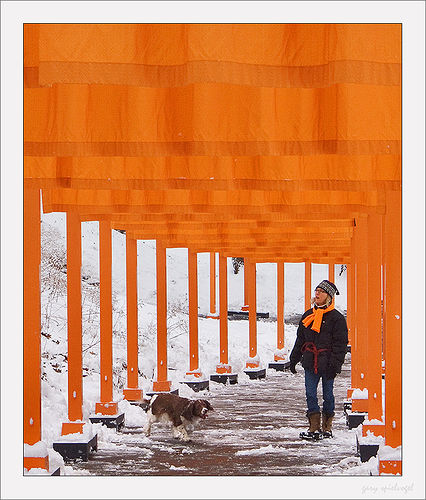 In this photograph of the Gates in NYC, in Gary H. Spielvogel's Flickr stream, you can see how the subject is framed in two dimensions. The girl is placed in the lower right section of the image but is also placed in terms of depth by the foreground and perspective lines created by the gate poles.
In this photograph of the Gates in NYC, in Gary H. Spielvogel's Flickr stream, you can see how the subject is framed in two dimensions. The girl is placed in the lower right section of the image but is also placed in terms of depth by the foreground and perspective lines created by the gate poles.
To read more about this photograph, follow the discussion in the Flickr CAFE for this image.
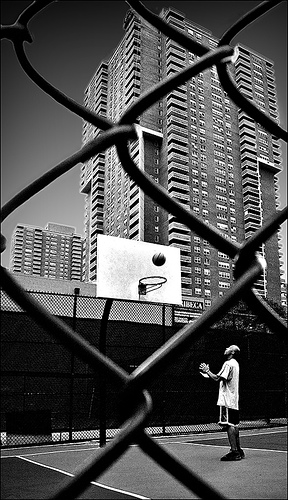
These are the two concepts, we'll look at, framing that surrounds the subject and framing that adds depth to the image by establishing a foreground or background.
In this photo, Gary has managed to do BOTH at the same time. Can you see three distinct layers of depth or three different subjects in this photo?
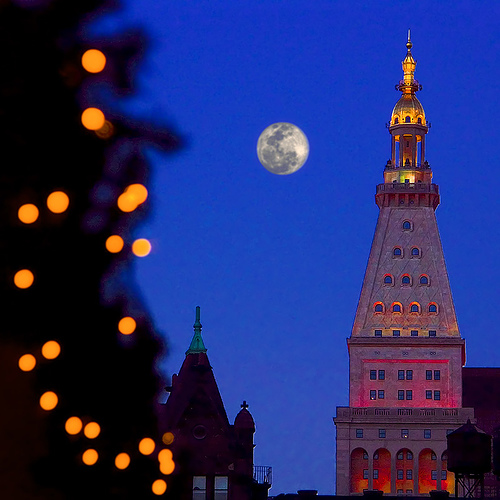 Here's another of Gary's amazing photographs. First see how the Christmas tree on the left frames the image and directs the eyes to the rest of the image. It makes the viewer feel like he's peeking around the tree. By using the tree in the foreground and catching the moon in the background, Gary created visual depth.
Here's another of Gary's amazing photographs. First see how the Christmas tree on the left frames the image and directs the eyes to the rest of the image. It makes the viewer feel like he's peeking around the tree. By using the tree in the foreground and catching the moon in the background, Gary created visual depth. In this photograph Gary is shooting inside the Metropolitan Museum of Art. The man and boy create a foreground and establish a frame and depth for the rest of the image. Imagine what this photograph would look like without the foreground - or - without the background. Good framing brings depth and structure to an otherwise flat photograph.
When observing a scene with a photographer's eye, look for depth by finding objects you can frame in the foreground or background.
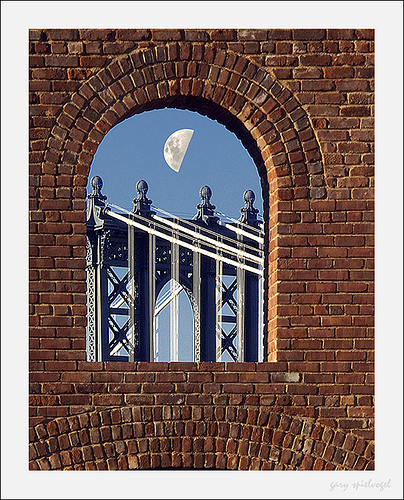
Can you tell in this photo that the moon was added? You could put almost anything behind this wall and get an interesting photograph.
Explore on your own:
Flickr Framing Tags
View all of Gary's work on a Flickr slideshow.
